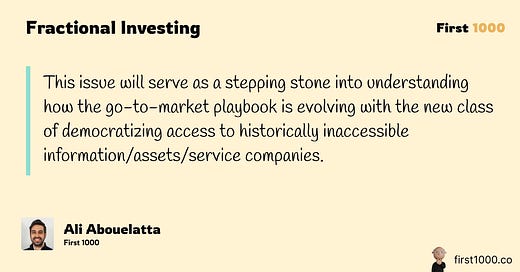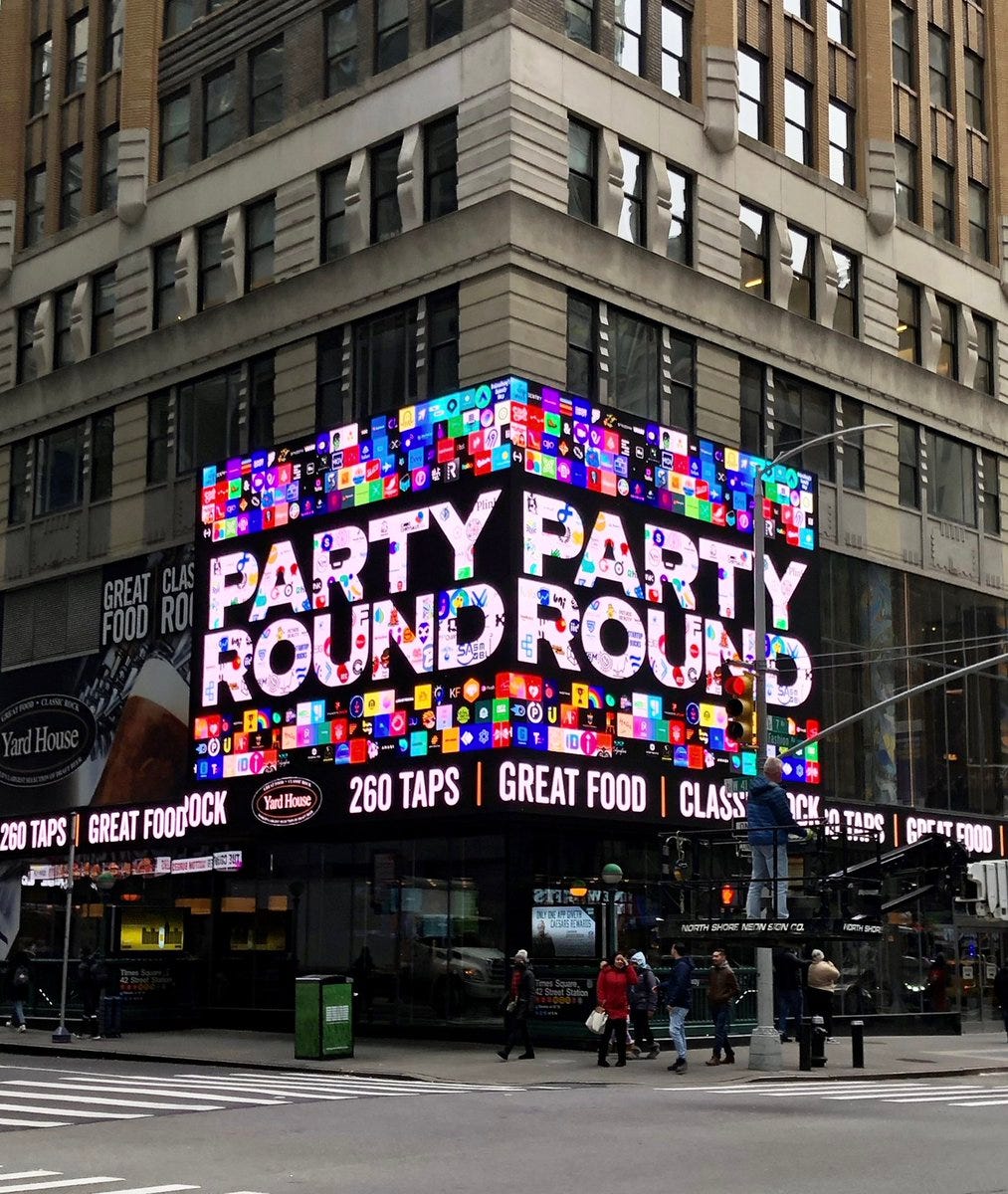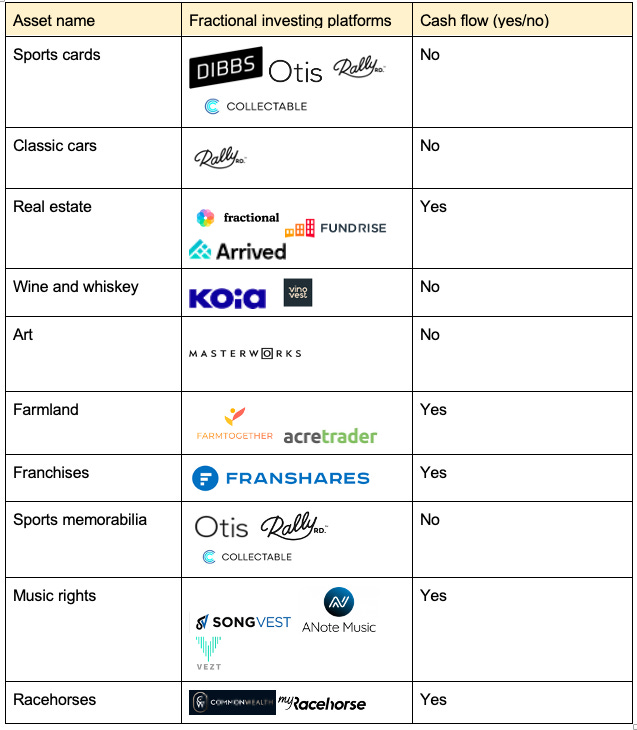By: Leo Luo
I first learned of the world of alternative assets investing a few years ago after watching a YouTube video about billboards. While most people think of billboards as an antiquated form of advertising, Frank Rolfe thinks of them as an asset class. An asset class he leveraged to generate millions of dollars right after graduating from college.
It’s a simple asset - you buy the billboard, sell ads, and make money passively. The number of billboards in the US has been pretty stable, hovering at around 340,000 over the last few years. Billboards advertising spending belongs to a category called out-of-home advertising, which was growing at 5-7% year-on-year pre-pandemic.
Besides billboards, there are countless other alternative assets out there, many of which not only appreciate over time and produce stable cash flow, but they are also a great hedge for a traditional investment portfolio of stocks and bonds. Alternative assets tend not to have a correlation with the broader market and can help an investor to diversify their entire portfolio and reduce the overall risk. I had never really dipped my toes into alternative investing - until I discovered the world of fractional investing.
There are now hundreds of platforms that empower average retail investors to gain fractional ownership of assets that are historically owned by the ultra-wealthy. In the past two years, I have had the chance to speak to founders in the fractional investing space, such as Chris from Rally and Stella from Fractional, and feature them on Consumer Startups (learn more about their stories here and here).
Recently, I also personally invested in property via Fractional, which helps people co-own investment properties with friends and other investors in the community. The platform removes many of the hassles associated with investing in real estate, such as financing and property management while helping amateur investors such as myself to learn more about real estate investing in a relatively low-risk environment. I put in a small amount of money into an investment property in Georgia (a deal listed on Fractional’s marketplace). The whole process took about an hour in total - 30 minutes of research and one 30-minute call with the Fractional team.
Today’s piece is about this fascinating world of fractional investing in alternative assets. Before I continue with the rest, I want to give a special shout-out to my friends Natalie Dillon and Stefan Von Imhof. Natalie is one of my favorite consumer investors, who invested in one of the leading fractional investing platforms, Otis. Stefan is the founder of Alts, the world’s largest alternative investing website. Both of them have given me so much insight into this space.
Let’s dive in.
The genesis of fractional investing
There are a few macro trends that are fueling the rise of fractional investing in alternative assets.
First, there is a lot of cheap money floating around as a result of the historically low-interest rates of the past ten or so years. Investors are looking for more asset classes to allocate their money to. In addition, there is a rising number of retail investors. Previously, people with disposable incomes put their money in the hands of wealth advisors, who tended to invest in conservative asset classes such as mutual funds, hoping to generate 6-10% a year while charging their clients a 1% fee. Money couldn’t even be withdrawn without sending these advisors an email or giving them a call. Subsequently, robo-advisors, such as Wealthfront and Betterment, emerged and promised to deliver the same product at much lower fees.
Then, Robinhood was born and started offering everyone free trading, lending, fractional stock investing, and all the tools a retail investor needs to manage money themselves. In addition, there was a mindset shift among younger generations of investors, who now had a new idea about what comprised a valuable asset.
“I think the younger generations of investors have an entirely different concept of value. There is a higher level of risk tolerance and return expectation. It’s not about the Warren Buffet style value investing, but more about catching waves before they break and betting on a ripple in hopes of it being the next wave. It’s a lot of YOLO trades and risky bets.” - Stefan, founder of Alts
Something that might seem like a hobby for traditional investors such as sneakers can be considered a valuable investment for newer generations of investors.
Yet, despite this shift, one problem remained: it was still a challenge to invest in certain things, such as music rights or artworks unless you had enough capital or connections. For a long time, most people could only invest in stocks, bonds, and other traditional asset classes. However, this has also changed.
New technologies and regulations are making fractional investing possible. For example, the Jumpstart Our Business Startups (JOBS) Act passed by the Obama administration significantly loosened up restrictions related to offering securities. Regulation A, a rule part of the JOBS Act, allows companies to offer and sell their securities without having to register the offering with the SEC. There are still a lot of hoops to jump through to create a Regulation A offering; however, if you are willing to put in some time and money from a legal standpoint, you can securitize anything in the world and sell fractional shares of any asset.
One of the first alternative asset classes to embrace fractional investing as real estate, which historically had a high barrier to entry due to a large amount of upfront capital required, but it is also an asset people are familiar with. Many other asset classes have since followed. I will dive into them in the next section.
Alternative assets market map
More and more asset classes are being disrupted; however, not all are suitable for fractional investing. Ultimately, people invest with the goal of generating a financial return. There are two categories of assets that make sense: 1) assets that generate cash flow 2) and assets that appreciate in value.
One asset in the first category is music rights. Record labels are the original music rights investors. They pay for most expenses upfront, such as marketing and production, and in return, they typically get 80% of album revenue. Today, there are platforms such as Vetz or Songvest that allow laymen to invest in their favorite songs or artists.
The rise of streaming has also made the payout of music rights royalties more predictable. Each individual stream doesn’t pay a lot, but streaming is consistent, and this consistency in revenue allows investors to value a music catalog without fearing that the revenue will cease or suddenly dip.
The assets in the second category are a bit more complicated since they can’t be valued based on cash flow. One example is wine, which has performed surprisingly well in the past decades and which, according to Vinovest, has beat the S&P 500 in recent years. It increases in value because investment-grade wines are only produced in limited quantities (100s or so), which decrease as people drink the wine; demand for wine continues to increase; and the quality of wine improves over time. These factors together make wine a strong candidate for fractional investing.
Below is a market map of different alternative assets that are being disrupted by fractional investing:
Many other asset classes, such as books, cultural assets, and sneakers, can also be strong candidates for fractional investing.
Business strategies and differentiation
Vertical investing platform vs horizontal investing platform
There are two main approaches for companies in the fractional investing space: start a vertical investing platform that focuses on one asset class or create a horizontal investing platform that serves many different asset classes.
Most companies that offer fractional investing start as a vertical platform. This can be advantageous because it enables companies to build communities in an authentic way. When you focus on one asset class, you can be more specific with your messaging, be more involved in the investor community you serve and do things that don’t scale to hack initial demand. For example, Rally started as a vertical fractional investing platform for classic cars. To generate initial demand for its minimum viable product, the Rally team rented a showroom in NYC for three classic cars, which allowed it to garner attention from both potential customers and investors.
“We rented a showroom on Wooster Street - it was like one of those old gallery spaces, but it had a garage door in the front. We wheeled in a couple of our assets and opened up our first investments at that point in time. We met with Jeff from Acorns and Eli from Betterment, who became investors in the company because they were walking down the block and got interested after seeing the showroom. It helped us build community in an authentic way.” - Chris, co-founder of Rally
This showroom also helped the company to attract media attention. It was featured on CNBC, WSJ, Bloomberg, and many other media outlets, which helped it to generate a ton of organic demand.
Over the last few years, Rally has slowly added more categories to its platform beyond classic cars, such as sports cards and books, and has become a horizontal investing platform for all collectible assets. This will likely be the trend for many other vertical platforms as they mature and find their footing. For example, Fractional initially focused on single-family properties and is now slowly expanding to multiple-family properties. By going horizontal, you can expand your total addressable market and attract investors who might initially be interested only in certain assets, eventually cross-selling other assets to them as you earn their trust. Furthermore, you can provide a user with more diversification within one platform and become the one-stop shop for all things alternative asset investing.
Differentiation strategies
Fractional investing platforms have various ways to differentiate themselves on both sides of the marketplace: investors (demand) and original asset owners (supply).
On the demand side, the most obvious way to stand out is to have the best deal flow, which means having a steady stream of new and quality assets. By frequently having new assets added to it, a platform can keep investors engaged and increase retention. On the other hand, it is equally important to have quality assets. For example, Masterworks has done a great job of acquiring art pieces from famous artists, such as Monet and Picasso. In an asset class that’s already foreign to most investors, having a list of blue-chip art pieces can be a great way to get people in the door and give additional assurance to those who might be hesitant to invest in art.
Besides having a good deal flow, another way to differentiate on the demand side is by providing liquidity for investors. This might be a given in traditional asset classes, such as stocks, but it is a luxury in alternative asset classes, especially those that are not as well-known, such as farmland. Often, there simply aren't enough investors to create a liquid marketplace. But platforms can get creative in this situation and facilitate private transactions. For example, FarmTogether, a farmland fractional investment platform, offers an annual liquidity window. During these windows, it assists investors in finding a buyer for their investment on a "best efforts" basis. Even for markets with a lot of investors, such as sports cards, platforms offer different levels of liquidity. For example, on Rally, investors have to wait approximately 90 days after the initial public offering to sell shares, and purchased shares must be held for five days, while on Dibbs, users can buy tokenized representations of physical cards and trade without any lock-up period at any time of the week since the system is powered by Ethereum blockchain. This liquidity difference could also attract different types of investors. As one Reddit user put it, “I would relate Rally & Collectable to your long-term traditional IRA and Dibbs to your short-term, riskier, day trading brokerage account.”
There are also ways to differentiate between platforms on the supply side, the biggest being how the platform acquires an asset from the original owner. One such option is the traditional buyout model. Platforms that adopt this model usually have an expert procurement team. For example, Masterworks has an in-house team that first uses its proprietary data to determine which artist markets have the most momentum and then identifies the valuable pieces in those markets and purchases them outright. Another means of acquiring assets is the consignment model. Platforms that use this model work with the original asset owner to securitize the asset and list it on their platform. In many cases, platforms allow the original asset owners to retain some equity in the asset as a benefit. One good example of this is Otis.
“What I think is a super fascinating thing that Otis has done is to offer multiple ways of liquidity to sellers, very different from what a traditional auction house would offer if they bought a piece: 1) far less fees and 2) sellers can maintain a percentage of ownership. As a seller, on Otis you can keep a percentage of the asset to maintain upside while receiving the benefit of near-term liquidity from the proceeds of the drop. Finding ways in which you can differentiate from sellers, while keeping a very high bar for quality is incredibly important."—Natalie, investor at Maveron
Challenges in the space
There are several challenges for players in this space. First and foremost, fractional alternative investments are still fairly new, and investors can be more sensitive to the performance of the assets involved. Most new investors in the space might be less familiar with alternative asset classes, so if prices drop for an extended period of time, there is a higher level of flight risk compared to stocks and bonds, the risks of which are better understood. One way to mitigate this challenge is to educate investors on the risks of the new assets and build trust, but it can still be challenging during a market downturn.
Another prominent risk is regulation. Even though there are laws in place that enable companies to securitize assets and sell fractional shares, it is still incredibly difficult and time-consuming to deal with the SEC. Each offering must be filed with the SEC for each asset launched on a platform. Bigger and more mature companies may have an edge due to their familiarity with the rules, but it is always time-consuming.
Finally, as the success of earlier platforms becomes better known, more companies will enter the space with their own angles. Existing players will not only face increased competition from new startups but also likely encounter threats from large trading platforms. For example, Robinhood started with stocks and has since expanded to options, cryptos, and non-fungible tokens. It would therefore not be surprising if it started expanding into the alternative assets space, especially as this would align with its mission to “democratize finance for all.” We could see some consolidations in the next two to three years as bigger players start to expand into this space.
Some closing thoughts
I am a big fan of this fractional investing space because it allows “regular” people to access high-return alternative asset classes, which were historically available only to the ultra-wealthy. I believe we are at the cusp of this shift and that many fractional investing platforms will emerge in the next 1–3 years. The trend started with real estate and cultural collectibles, but it will eventually expand to all asset classes that can produce stable cash flow or consistently appreciate over time.
As more asset classes become available, there will also be a rising number of thematic alternative funds. Instead of just investing in one sector, retail investors will be able to invest in a portfolio of alternative assets that fit into different themes. For example, there could be a Chicago fund that invests in rare Jordan sneakers, certain Chicago commercial buildings, and famous local franchises. Investors would then be able to invest in themes that align with their values and interests.
In addition, as I mentioned in the previous section, I believe this fractional investing space will get yet more heated and competitive. As the industry continues to mature, consolidations are likely to occur. Horizontal platforms such as Rally or Otis might acquire smaller vertical players to expand their investable assets. Large trading platforms such as Robinhood could ultimately acquire one of the horizontal platforms as a way to enter the space. I am eager to see how everything shakes out in the near future.
It's an exciting time!






